
Lot 61
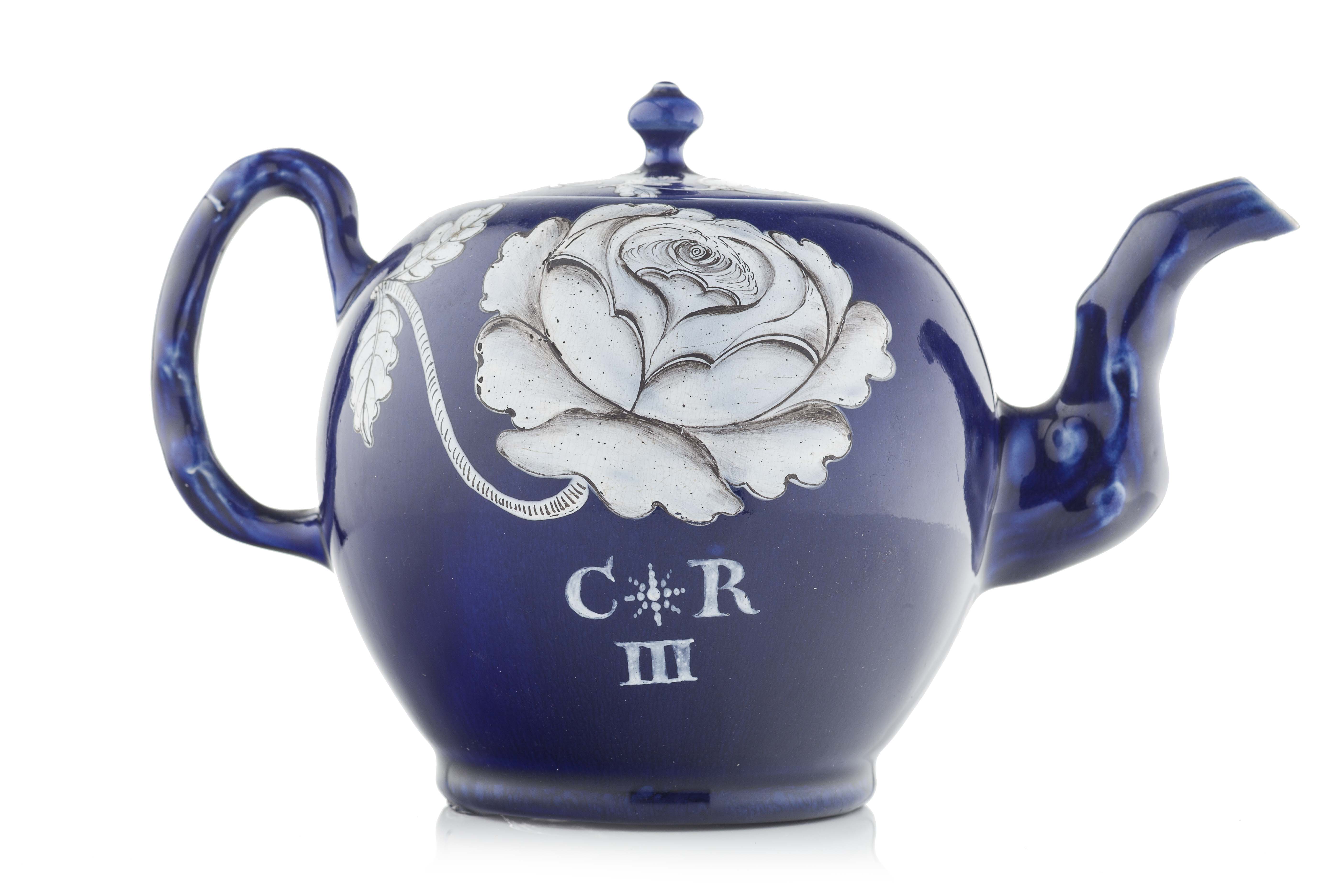
An important Jacobite “King Charles III” salt glazed teapot circa 1766

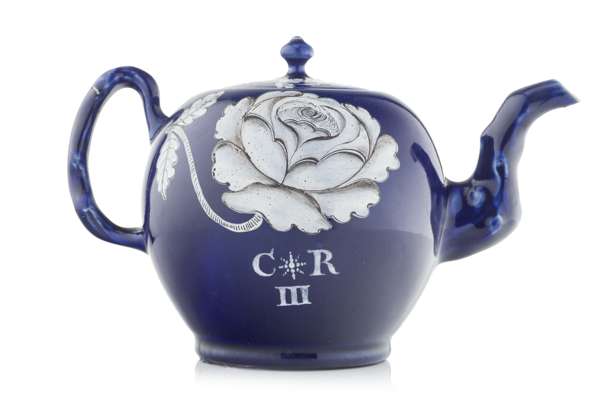
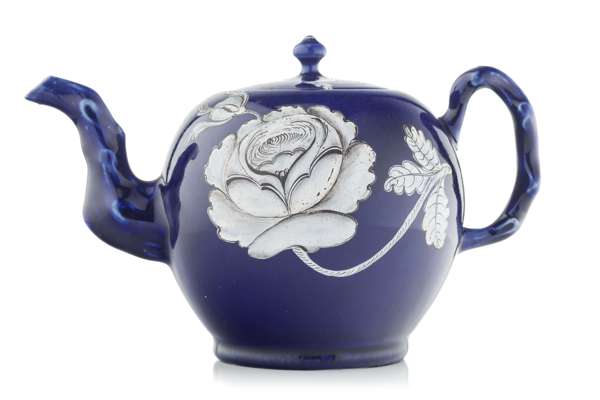
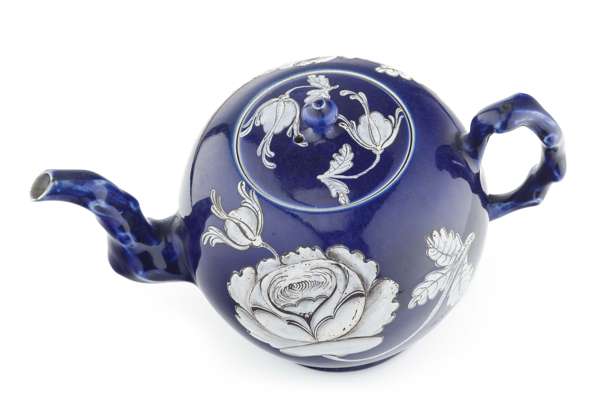





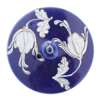
Jacobite, Stuart, and Scottish Applied Arts
Auction: 13 May 2015 at 12:00 BST
Description
of tapered bullet form with cobalt blue glaze with white rose and rose bud decoration to body and cover, inscribed C*R / III, with moulded naturalistic branch formed curved spout and C scroll handle.
Dimensions
14cm high
Footnote
Provenance:
Byrom Family collection
By descent
Notes:
This teapot is one of only two recorded of this Jacobite decoration and a very rare relic of Prince Charles Edward Stuart titling himself King Charles III. One other example is recorded within the collection of the British Museum (1938,0218.1.CR). Although unmarked, the style, date and use of such bold cobalt blue glaze suggests Longton Hall as a possible factory. As with most Jacobite ceramics no marks are present but this theory appears universally accepted.
After the death of his father, King James, Charles considers himself the heir to the thrones that they had been fighting for his whole life. He drops his assumed title as Prince of Wales, taking his rightful one as King Charles III.
The representation of Jacobite decoration in rose head and rose buds has also changed from the more commonly encountered rose and twin buds (representing King James, Prince Charles and Henry Benedict, Cardinal Duke of York) to show only two Stuarts, with one rose and one bud. The bud still remains closed for Henry Benedict as even after the death of his father he had no future claim to the lineage having denounced all claims previously.
This teapot must therefore date tightly to 1766 when the Stuart plight would again have been in the public conscious both on the death of James but the ascension of Charles.
A newly recorded example of this rare form, this teapot formed part of a collection of Jacobite relics held with the branches of the Byrom family. The Byrom family, particularly John Byrom (1692 – 1763) appear to have been important Jacobite supporters in England, based originally in the north of Manchester.
The 1745 uprising was not solely or, in many ways, predominately a Scottish uprising. The interest and influences in the cause had resonance throughout the United Kingdom and support was found in many areas within England. The planned invasion of England, from French shores, could only have worked with the support and timed uprising of English Jacobites. Their support throughout the campaigns is unquestioned, even if the timed uprising and invasion did not come to final fruition.
The Byrom Family had been supporters throughout the ’45 although their support appears to have been less public than some. John Byrom has variously been considered a Jacobite or indeed a double agent for the Crown. Both are possible as keeping an eye on both camps was not uncommon at the time, as falling on the wrong side after any eventual victory or defeat would, and did, prove dangerous. Byrom’s Jacobite sympathies and support are seen within this teapot, the ownership of such an overt object being a dangerous affair.
It seems likely that a man of such intellect and education played an important role within the organisation of the uprisings. His invention of ‘New Universal Shorthand’ in 1716 was not only used by King George II’s clerks in the House of Lords but was taught at both Oxford and Cambridge. He was granted sole right of publishing the art and method of such for twenty one years. Although the form was superseded in the 19th century this form was widely regarded in its day and used in many forms.
John Byroms Jacobite sympathies again cannot be questioned by his membership (and possibly founding) of Jacobite societies and indeed a version of his shorthand was engraved to the glasses of the society with Jacobite mottos hidden from view. Rarely glasses of this form are found with the motto ‘Down With The Rump’ engraved in shorthand. The toasts recorded for the club again show his clever use of double negatives
God bless the King! (I mean our faith's defender!)
God bless! (No harm in blessing) the Pretender.
But who Pretender is, and who is King,
God bless us all! That's quite another thing!









